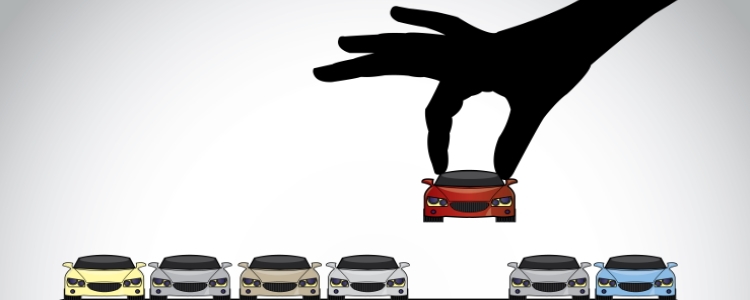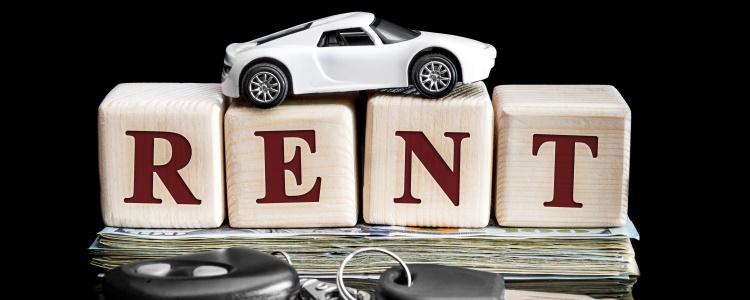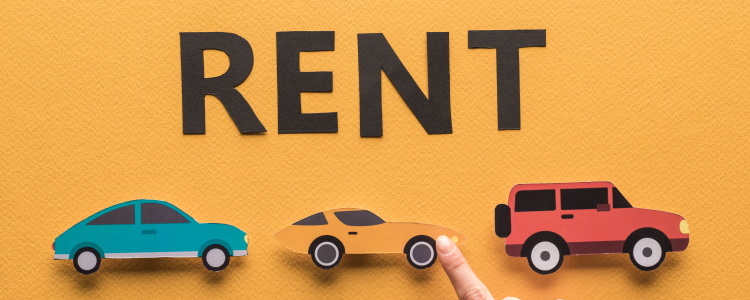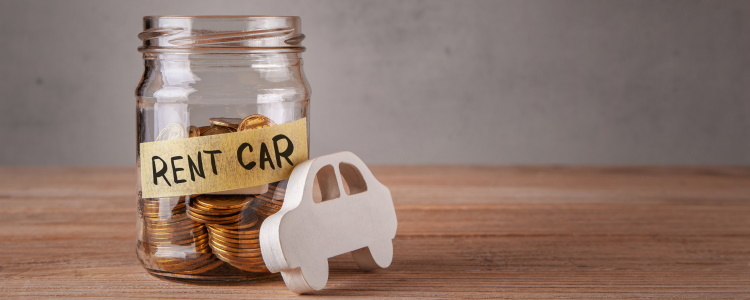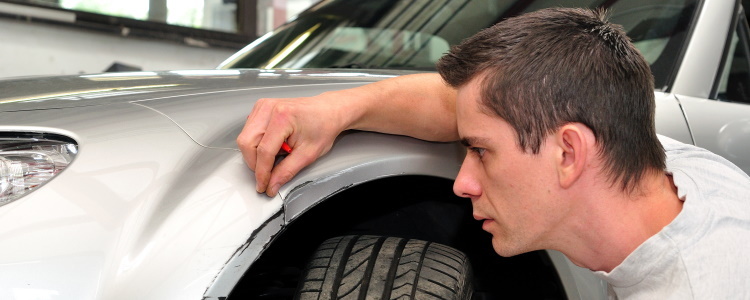Some dealers advertise lease-to-own programs, and these programs shouldn't be confused with traditional car leasing. Even though the word "lease" is used to describe the arrangement, if you lease-to-own your vehicle, you're not actually leasing.
When you look at these two options side by side, it is clear that they aren't even similar. Leasing and leasing-to-own involve different types of contracts, different vehicle options, and also target different types of customers.
What is a Rent to Own Car?
Lease-to-own auto contracts are offered at buy here pay here (BHPH) dealerships. They’re also called rent-to-own agreements and are usually promoted to car buyers with credit issues. This is because most of the dealers who offer this option do in-house lending. This means that they don't use third-party lenders, so it's easier to get approved for a rent-to-own vehicle with bad credit.
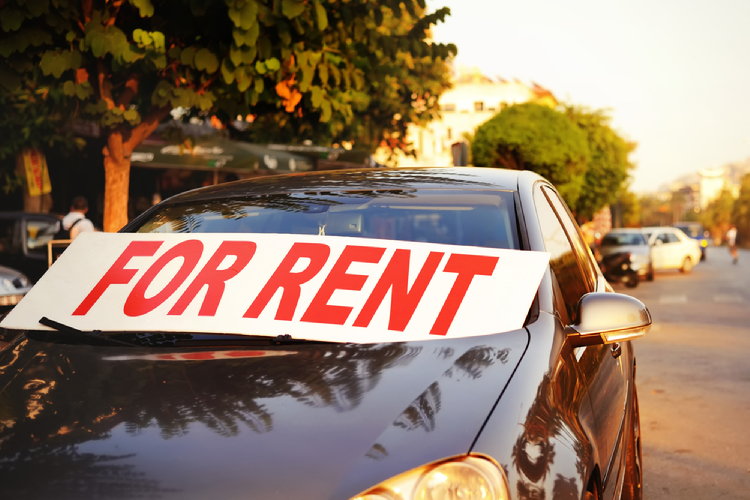
A key thing to understand about rent-to-own agreements is that they aren’t loans. This means there isn’t a lender that paid for the vehicle, and now you’re paying the lender – a lease-to-own agreement means you pay the dealer directly until you’ve paid off what you owe. Because it’s not a loan, there also aren’t any interest charges to worry about.
In the end, you get the name in your title and own the car. Similar to vehicle financing, you’re responsible for covering auto insurance and any other regular maintenance during the agreement.
Lease-to-own agreements are popular with borrowers who have tarnished credit histories. Many BHPH dealerships don’t review credit reports during the approval process, making it easier for bad credit borrowers to get approved for an agreement like this. However, credit repair may not be possible – lease-to-own contracts aren’t typically reported because they're not a form of credit.
Highlights of lease-to-own cars include:
- The dealer keeps their name on the title until the agreement is done
- Used cars only
- No interest charges
- No mileage limits
- A credit check may not be required
- Weekly payments might be required
- Able to return the vehicle at any time, typically without penalties, but you forfeit all previous payments
- Agreements and payments may not be reported to the credit bureaus
Leasing-to-Own Means Buying the Car
Using the term "lease-to-own" to describe the actual process is somewhat deceptive. While the dealer holds the car's title while you're making payments, the goal is for you to eventually own the car. If you make all of the payments outlined in the agreement, you end up purchasing the vehicle. Unlike a traditional lease, you can back out of the contract if you want, but all of your prior payments are forfeited.
However, if you lease a car, it is understood that the vehicle will go back to the dealer or leasing company when the contract expires. Meaning, that none of your lease payments actually go toward buying the car. Of course, you can opt to purchase the leased vehicle instead of returning it. But this requires a separate negotiation, and it is never just assumed that you will take this option.

How Does a Rent to Own Car Work?
With rent-to-own cars, you typically purchase the vehicle at the end of the rental agreement. The goal is to complete your rent payments so you can own the car. Similar to a traditional auto lease, your name isn’t listed on the title for the rent-to-own vehicle, unless you purchase it at the end of the rental period.
However, if you hear “to own” at the end, it's likely for a used car at an in-house financing or buy here pay here (BHPH) dealership.
While BHPH dealerships don’t normally check credit scores, they also may not report your rental agreement to the credit reporting agencies, either. Even if you make every payment on time, your credit score may not improve. If you decide to look for a rent-to-own car, be sure to ask the dealer if they report rentals and payments to the major credit bureaus if you want to help your credit score.
Some BHPH dealerships may also allow the renter to back out of the rent-to-own agreement, unlike a traditional lease. But this means you forfeit your down payment, and all rent payments, and gain nothing at the end of the rent-to-own contract.
Additionally, with a rent-to-own vehicle, you may be expected to make weekly or biweekly payments at the dealership. Renting also may be more expensive than simply financing a car, and it’s often a last resort option for bad credit borrowers who need a vehicle right away.
Leasing a Car vs. Lease to Own Cars
While renting and leasing are often used interchangeably or alongside one another, these terms have very different meanings when it comes to auto financing. Conventional leasing usually requires an applicant to have reasonably good credit. It may be possible for someone with bad credit to qualify for a lease car, but it's much harder. Also, lessees with less-than-perfect credit typically won't be offered the lowest promotional rates.
One of the main differences between a lease and a rent-to-own car is the dealership where it's offered. Leases are almost exclusively for new vehicles and available at traditional, franchised dealers. Rent-to-own cars are offered at dealerships with in-house financing, where the dealer is also the lender. Rent-to-own vehicles, also called lease-to-own cars, are used cars.
If you go to a lease-to-own/rent-to-own lot, you're most likely to be presented with used car options. Often, these vehicles are older models with a fair amount of mileage. There's also a good chance that you could end up paying much more than your car is worth by the time your contract is completed.
Leased vehicles, however, are almost always new. This actually goes back to one of the main reasons that some consumers choose leasing over buying. New cars depreciate rapidly in the first few years. So, if you lease a new vehicle, you pay for the part of the car that you're using. Basically, your payments cover the value that's lost, plus interest, while the vehicle is in your possession.
For those who are okay with always having a car payment in order to always have a new vehicle to drive, leasing might be a good option. Just remember that most of the time, your credit needs to be in good to excellent shape in order to qualify.
On the opposite side, for car buyers with severe credit issues, a lease-to-own program is an okay last-resort option. Just keep in mind that it isn't a cheap option and that you might be expected to make either bi-weekly or even weekly payments – typically at the dealership. Also, most lease-to-own dealers don't report loans or payments to the credit bureaus. So, buying a vehicle this way doesn't help your credit score.
In-House Financing vs Lease to Own Car

In-house financing is what it sounds like, the financing is done at the dealership. This also means that the dealer is your lender. Another name for a dealership that has in-house financing is a buy here pay here (BHPH) used car lot, or a tote the note dealer.
No matter the name, these dealerships are a one-stop shop for bad credit borrowers. The reason poor credit borrowers seek them out? The dealers often skip the dreaded credit check.
Most traditional lenders request your credit reports and largely gauge your ability to pay for a vehicle based on your credit score and history. Additionally, your interest rate is mainly based on your credit score, too.
In-house financiers tend to skip over the credit check, and simply verify income and ask for a down payment. Additionally, in-house financing dealerships can offer lease-to-own agreements, which aren’t available at traditional dealers.
The main difference between a lease-to-own car and an auto loan is that you don’t get your name on the title of a lease-to-own vehicle until you’ve made the last payment. This seems odd, but it’s done in part for the dealership and in part for you.
If you’re driving a lease-to-own car, and decide that you no longer want it, you can typically return the vehicle with no strings attached – your name was never on the title to begin with. This varies depending on the language in your loan contract, so be sure to read it thoroughly and ask about the consequences of returning the car early.
To qualify for a lease to own at a BHPH dealer, expect to need your check stubs to prove your income and bring a down payment.
What you qualify for depends on what you make, and the down payment amount required often depends on the selling price of the vehicle.
What’s the Catch With a Lease to Own a Car?
While the convenience and relative ease of qualification for lease-to-own cars are the more desirable features, the catch is likely to be the price and payment schedule.
Sometimes, lease-to-own vehicles require multiple payments in the month, like on a weekly basis instead of monthly. You may also be required to make the payments in person at the dealership, but this is becoming less common in this day and age. Be sure to ask about your payment options, since late fees are also common with lease-to-own agreements.
To make up for the lack of interest, the payments of a lease-to-own agreement could be expensive, and you can usually expect to pay more for the car than it’s worth.
How much more you pay depends on the vehicle and the dealer, and what kind of deal you can get into. While you may end up paying more for the car, the lack of a credit check and the ease of getting into a lease to own could be considered the trade-off in this scenario.
If you decide to seek a lease to own a vehicle, once you get quoted a payment amount, ask about rental terms and see how many payments you’re making. Add all the payments together and see how much you’re going to end up paying altogether.
Another consideration to remember is that you’re going to be responsible for repairs, regular maintenance, and paying for auto insurance. Be sure to budget for these costs, too.

